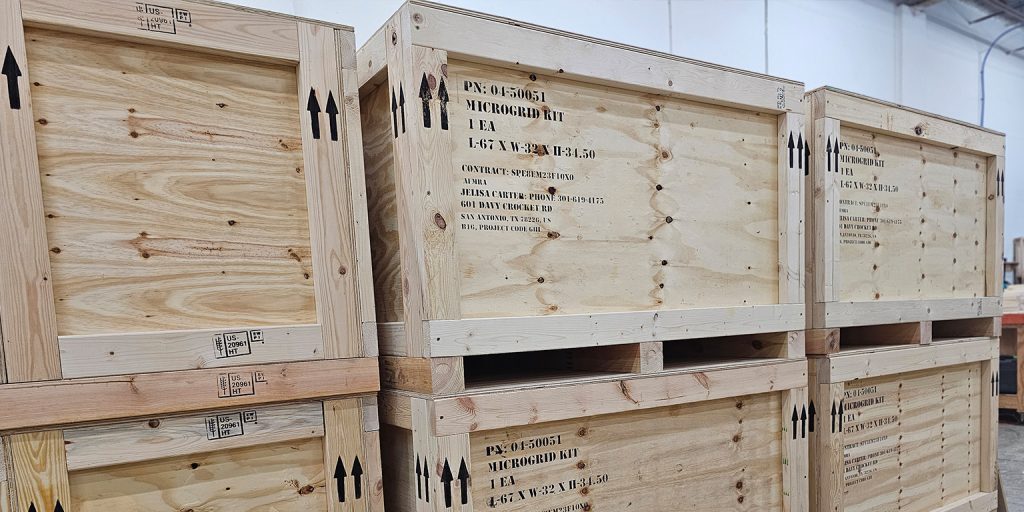
5 Common Shipping Challenges and How to Solve Them with Wood Shipping Crates
In the dynamic world of logistics and transportation, ensuring that products reach their destinations safely and efficiently is a critical concern for businesses. Among the numerous methods available, using wood shipping crates stands out for its robustness and versatility. In this blog, we will explore solving shipping challenges with wood cratess and discuss how wood shipping crates offer practical solutions to these problems.
Damage During Transit
Challenge:
One of the most prevalent issues in shipping is the damage that products incur during transit. Rough handling, vibrations, and external pressures can cause significant harm to goods, leading to financial losses and customer dissatisfaction.
Solution:
Wood shipping crates provide exceptional protection due to their sturdy construction. Unlike cardboard boxes, wooden crates can withstand considerable external forces without compromising the safety of the contents. The rigidity of wood absorbs shocks and vibrations effectively, ensuring that the items inside remain intact. Additionally, wood crates can be custom-built to fit the exact dimensions of the product, providing a snug fit that minimizes movement and potential damage.
Weight and Handling Issues
Challenge:
Handling heavy or awkwardly shaped items poses a significant challenge in shipping. Standard packaging materials may not offer the necessary support, leading to difficulties in transportation and an increased risk of accidents.
Solution:
Wood shipping crates are ideal for handling heavy or irregularly shaped items. Their robust construction can support substantial weight without deforming or breaking. Furthermore, crates can be designed with features such as forklift cutouts or handles, making them easier to maneuver with standard lifting equipment. This not only facilitates safer handling but also speeds up the loading and unloading process, improving overall efficiency.
Environmental Conditions
Challenge:
Shipping products over long distances often means exposure to varying environmental conditions such as humidity, temperature fluctuations, and moisture. These factors can adversely affect the integrity of the packaging and the products inside.
Solution:
Wood is naturally resistant to a wide range of environmental conditions. When properly treated, wood shipping crates can withstand high humidity and moisture levels without deteriorating. Additionally, wood’s insulating properties help to moderate temperature fluctuations, providing a more stable environment for the products inside. For added protection, crates can be lined with moisture-resistant materials or sealed with waterproof coatings.
Compliance with Shipping Regulations
Challenge:
Different countries and shipping companies have varying regulations regarding packaging materials. Non-compliance can result in delays, fines, or even the refusal of shipment.
Solution:
Wood shipping crates can be designed to comply with international shipping regulations. For instance, the International Standards for Phytosanitary Measures No. 15 (ISPM 15) outlines the treatment requirements for wood packaging materials to prevent the spread of pests. By using wood crates that meet these standards, businesses can ensure their shipments are compliant and avoid costly delays. Additionally, custom-built wood crates can be tailored to meet specific regulatory requirements, providing peace of mind for international shipments.
Sustainability Concerns
Challenge:
As environmental concerns become increasingly prominent, businesses are under pressure to adopt sustainable practices. Traditional packaging materials like plastic can have a significant environmental impact, leading companies to seek more eco-friendly alternatives.
Solution:
Wood shipping crates are a sustainable option for businesses looking to minimize their environmental footprint. Wood is a renewable resource, and many crates are made from sustainably harvested timber. Additionally, wood crates can be reused multiple times, reducing the need for single-use packaging materials. At the end of their life cycle, wood crates can be recycled or repurposed, further minimizing waste. By choosing wood shipping crates, businesses can enhance their sustainability efforts while still ensuring the safe transportation of their products.
Shipping products safely and efficiently is a complex challenge that requires careful consideration of various factors. Wood shipping crates offer a versatile and robust solution to many common shipping issues, from damage prevention to regulatory compliance and environmental sustainability. By leveraging the unique properties of wood, businesses can enhance their shipping processes, reduce costs, and improve customer satisfaction.
Whether dealing with heavy machinery, delicate electronics, or perishable goods, wood shipping crates provide the reliability and protection needed to navigate the complexities of modern logistics. As businesses continue to seek ways to improve their shipping practices, wood crates remain a timeless and effective choice.


